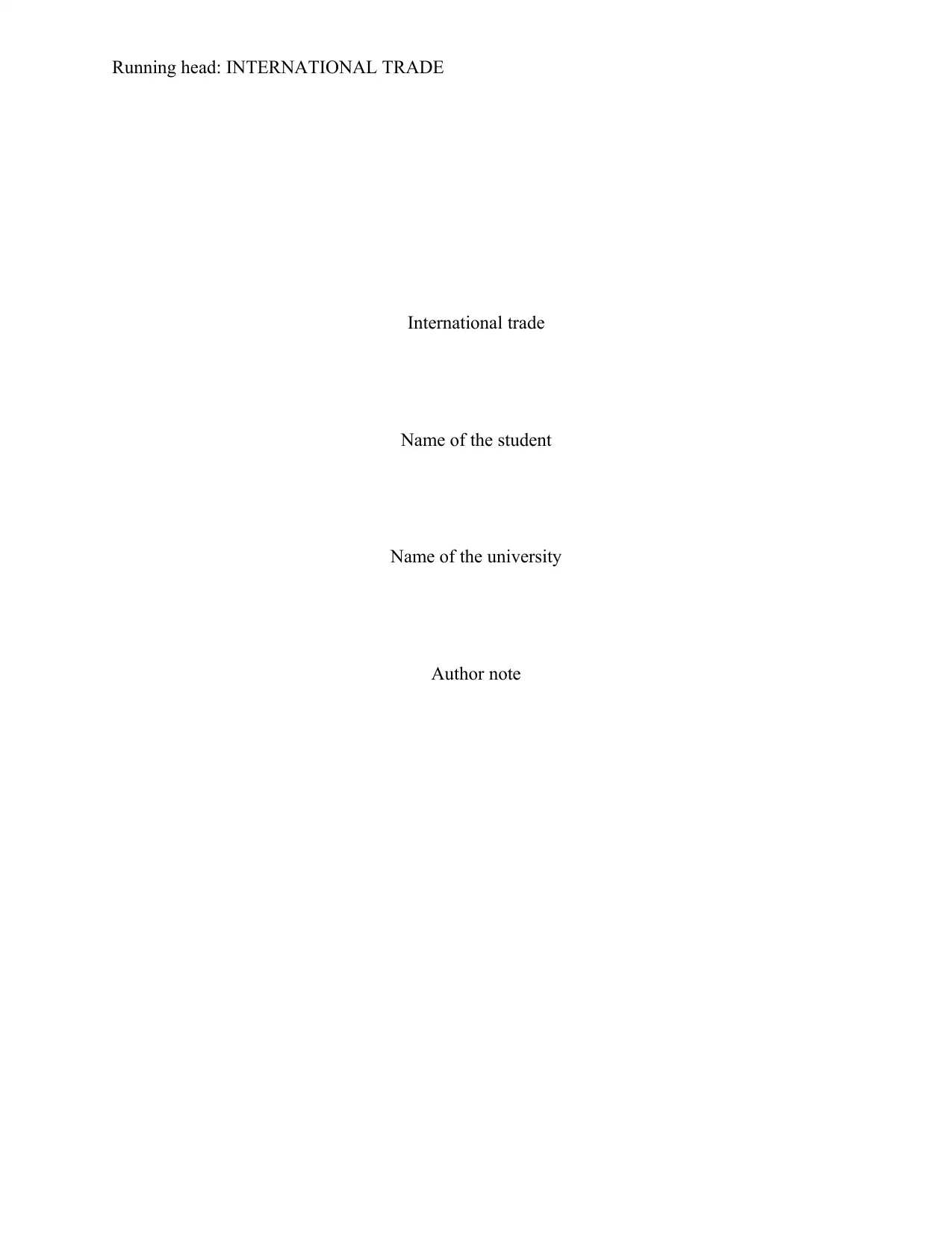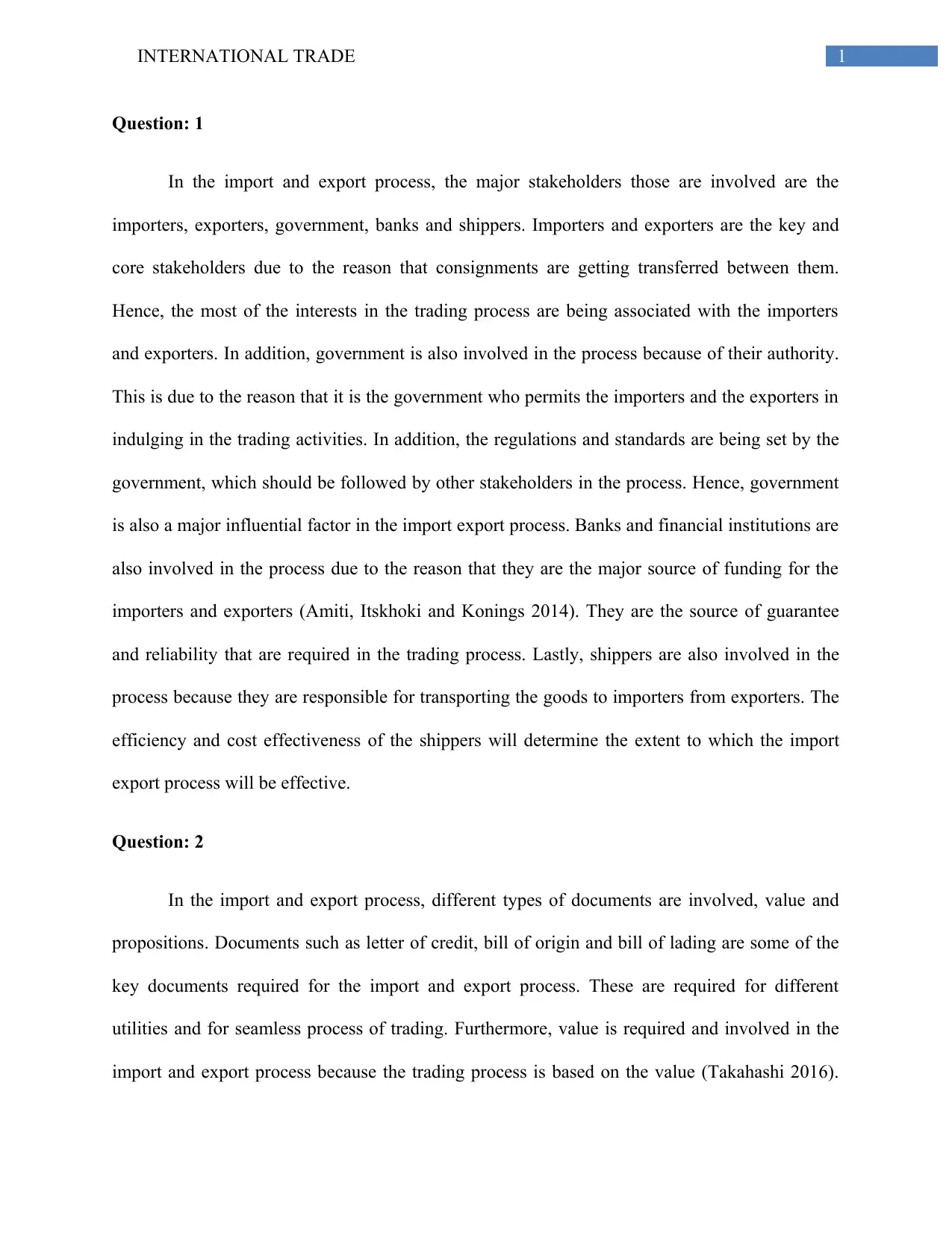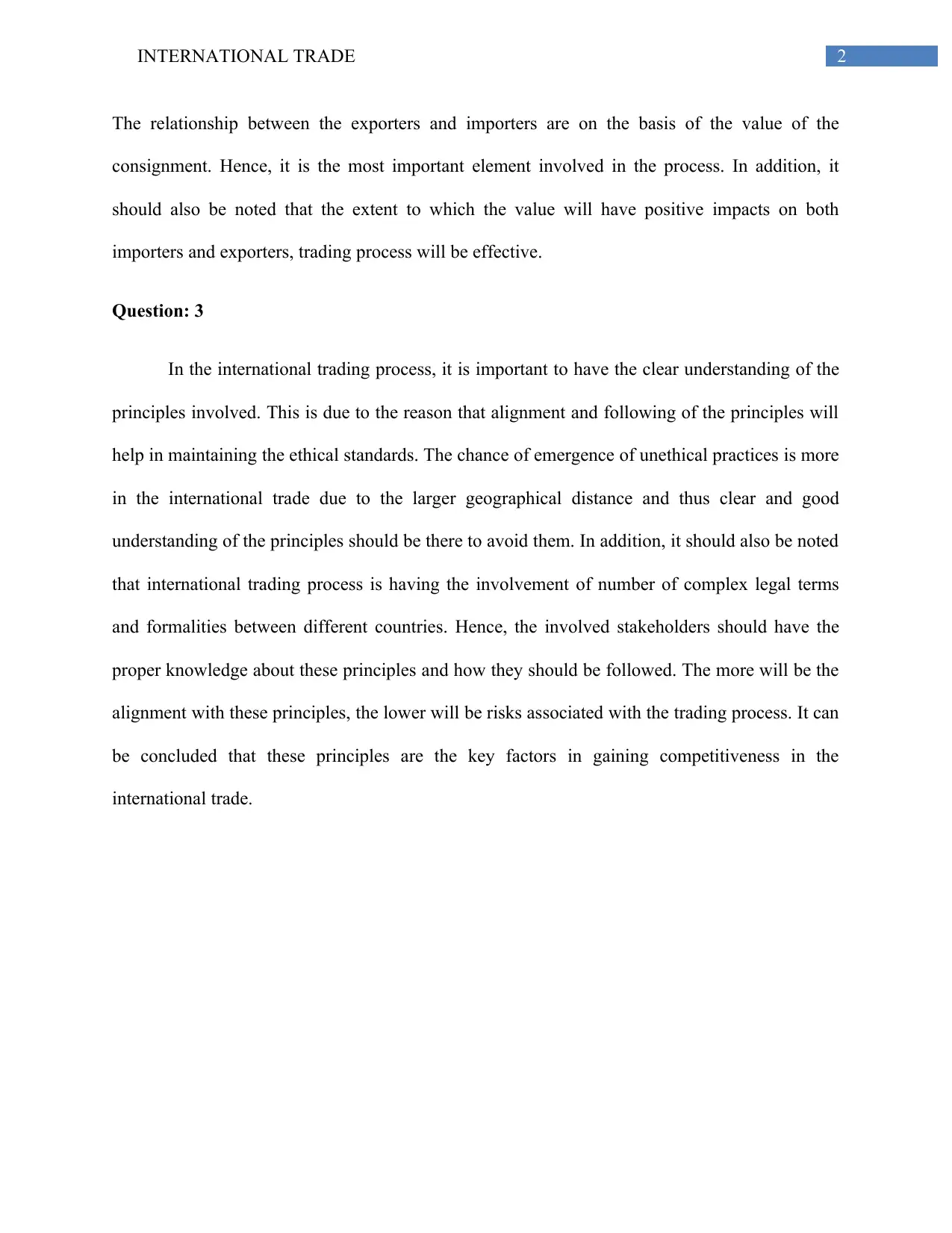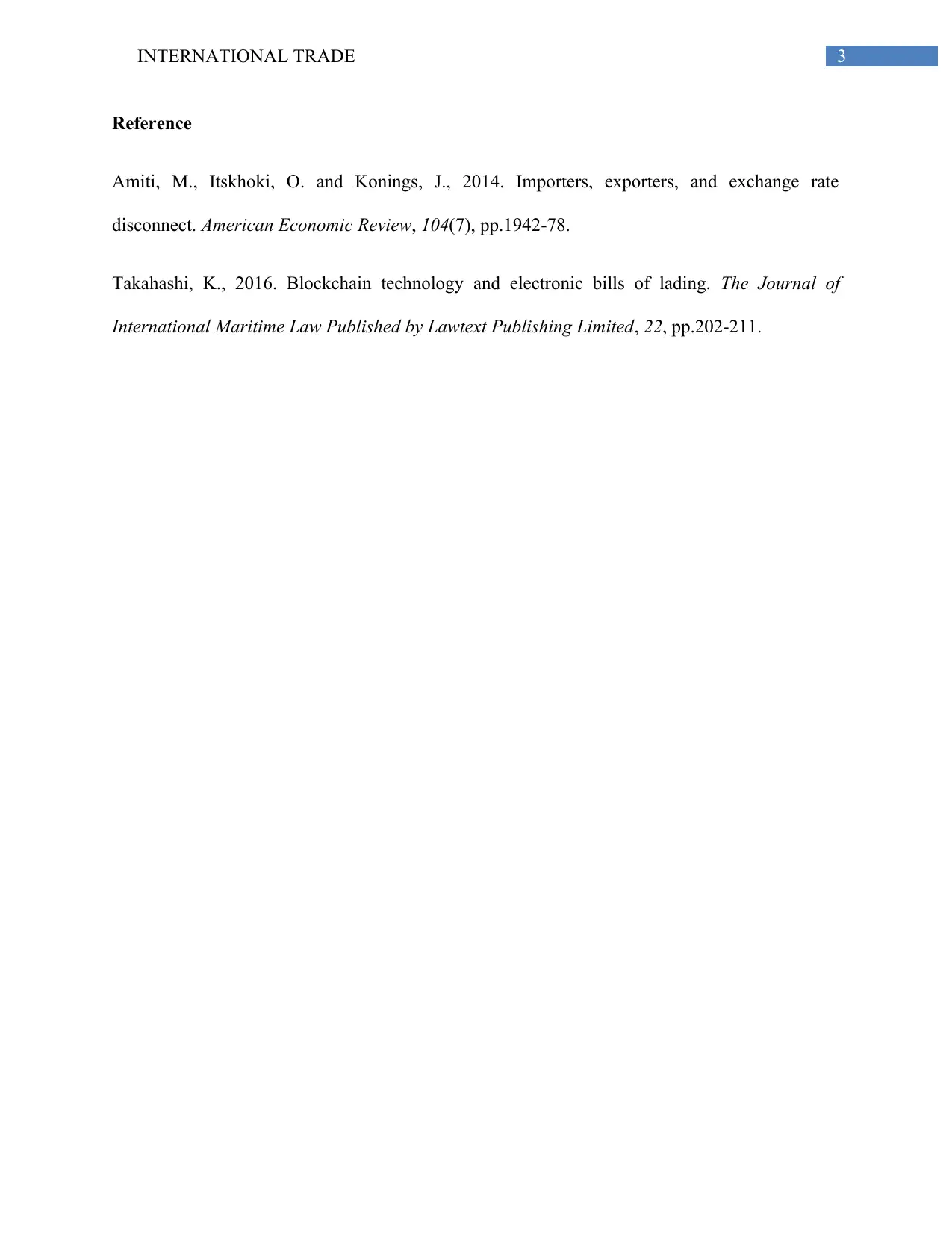International Trade: Analyzing Key Stakeholders and Processes
VerifiedAdded on 2022/10/10
|4
|647
|216
Homework Assignment
AI Summary
This assignment examines the core concepts of international trade. It delves into the key stakeholders involved in the import and export processes, including importers, exporters, governments, banks, and shippers, highlighting their roles and influence. The assignment also explores the essential documents used in international trade, such as letters of credit and bills of lading, emphasizing their significance. Furthermore, it addresses the importance of understanding and adhering to ethical principles in international trade to mitigate risks and maintain competitiveness. The assignment references academic sources to support its analysis, providing a comprehensive overview of the subject.
1 out of 4











![[object Object]](/_next/static/media/star-bottom.7253800d.svg)